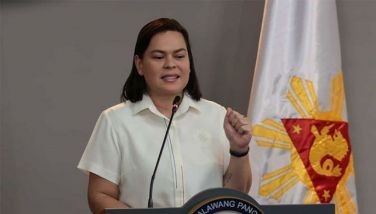Creative Writing: Dialogue
CEBU, Philippines - What is creative writing? Perhaps one would wonder if there is any difference between creative writing and writing a story.
Well, here in Cebu, after reading hundreds of local stories, I saw the difference. Bear in mind that creative writing is inventive. Creative writers are creating something out of nothing. Whereas journalism is writing for newspapers and magazines, most of our journalism graduates here use their knowledge as a tool for writing stories. But their stories are not creative.
Creative writing is composed of many elements, such as : a. Finding story ideas, b. Plotting your story outline, c. Characterization, d. Dialogue, e. Descriptions, f. Viewpoint, g. Flashback, h. Attention Grabbing Intros, i. Edifying Endings. These are all the elements of good Creative Writing.
I’ll just take up Dialogue. Is dialogue really necessary? Yes, it’s vital. Characters need to speak. They need to be heard – out loud! If you don’t let us hear what the character thinks and feels out of his own mouth, he’ll remain forever a symbol (not a living, breathing, individual) and we won’t care about him or what happens to him. Dialogue brings us closer to a character. Deny us his words and you’re making sure that he’ll remain distant, vague and unsympathetic.
Rob a story of dialogue and you’re likely to fall into the trap of summarizing events rather than letting them unfold in real time. You’ll end up telling instead of showing.
When we hear the character speak, we experience the events in the story as they happen. We’re there in the thick of the action. But when characters don’t speak, the writer has to put up the missing dialogue in other ways – usually in long obtuse descriptive passages and clumsy, intrusive explanations. We’re no longer involved with the main character’s sharing of his adventures. Instead, we’re listening to a narrator recounting the adventures in a static second-hand summary. It’s a poor substitute for a ring-side seat of the action.
Do stories need dialogue? Yes. We spend our lives talking to each other and we expect the characters who inhabit the story we read to do the same. Here’s an example:
“Three eggs and a pint of milk, please,” is not a dialogue. It doesn’t add anything to our understanding of the character, the setting or the events unfolding.
“My God! It’s going to blow! Run everyone!” is a dialogue. It quickens the pace and builds the tension.
Dialogue has three main functions:
1. To move the action of the story. “Honey, sit down, I’ve got a surprise for you. It wasn’t indigestion after all…I’m pregnant!”
2. To reveal more about the characters. “Love you? I could never love anyone who is poor.”
3. To inject excitement. “If you don’t hand it over, I’ll kill you – so help me!”
If you find it a problem to describe your characters in any detail it may be because you don’t know enough about them. As in real life, it’s difficult to talk for long about someone who is just a casual acquaintance. You run out of facts.
If this is a problem, you may find it a useful exercise to know them: Where they come from, what they like and why they act the way they do. Create a personality profile form, fleshing out your hero with relevant background details.
- Latest
- Trending




















